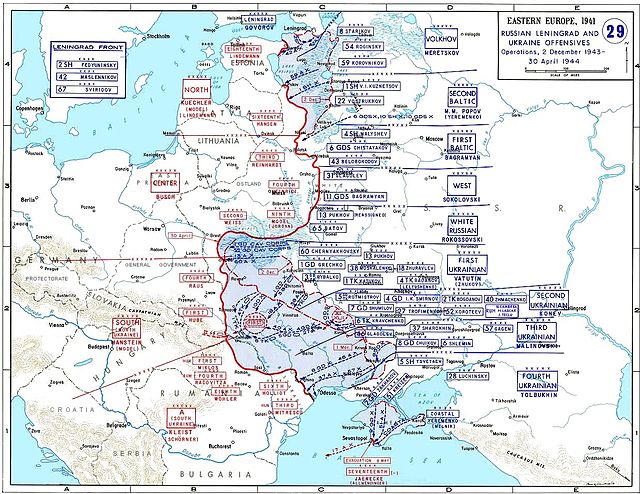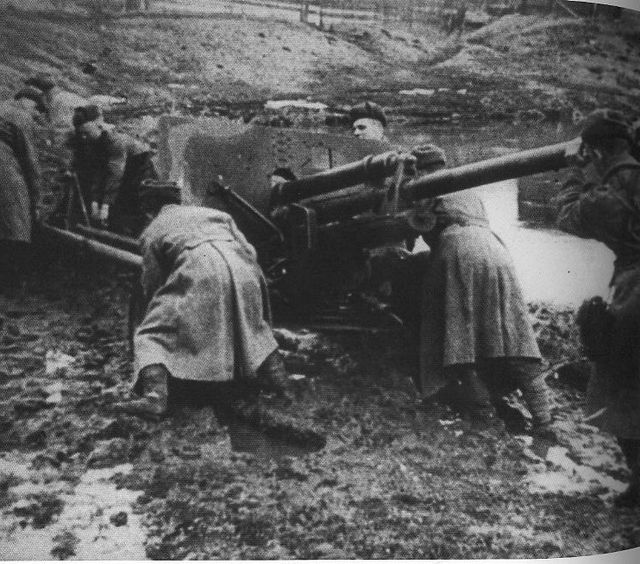The Polesskoe offensive, also known as the Battle of Kovel, was a World War II Soviet offensive operation, launched by the 2nd Belorussian Front at the junction of Army Group South and Army Group Center, with the goal to strike deep into the flank and the rear of Army Group Center. It was part of a greater Dnieper-Carpathian strategic offensive on the right-bank Ukraine.
German artillery and tanks are deployed in the combat area southwest of Kovel, March 1944.
Dnieper–Carpathian offensive
The Dnieper–Carpathian offensive, also known in Soviet historical sources as the Liberation of Right-bank Ukraine, was a strategic offensive executed by the Soviet 1st, 2nd, 3rd, and 4th Ukrainian Fronts, along with the 2nd Belorussian Front, against the German Army Group South, Army Group A and elements of Army Group Center, and fought from late December 1943 to early May 1944. The battles in right-bank Ukraine and in the Crimea were the most important event of the 1944 winter-spring campaign on the Eastern Front.
Soviet advances during the operation
The spring thaw created very muddy conditions which encumbered both armies.
Some of the destroyed German equipment following the attempt to break out from Korsun
Soviet T-34 tanks near Odessa, April 1944





